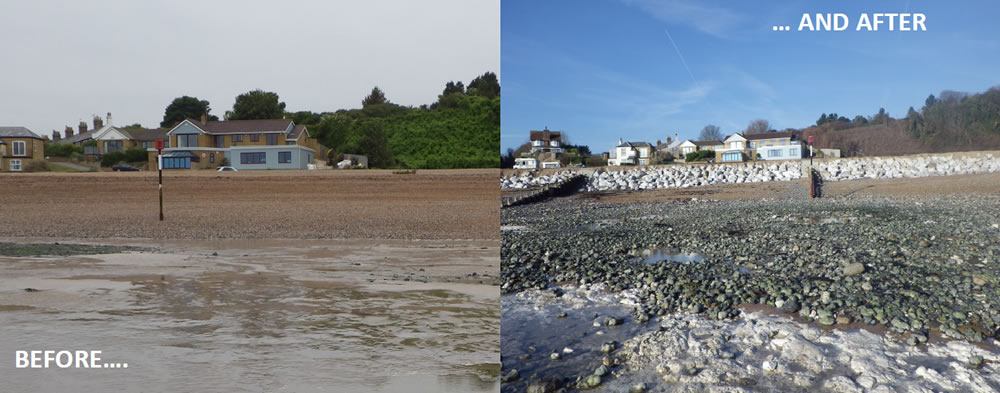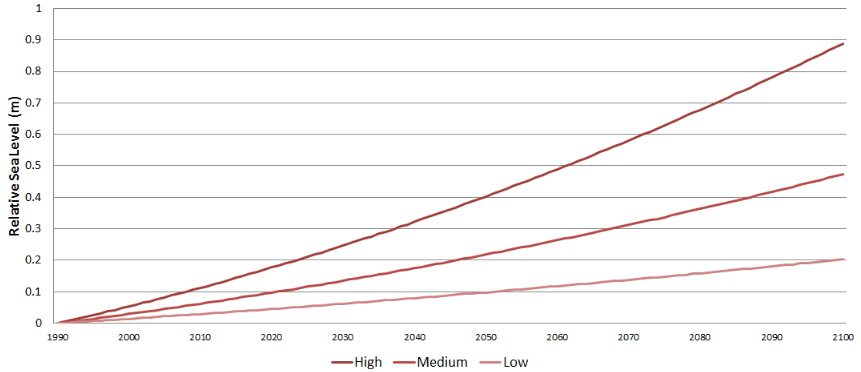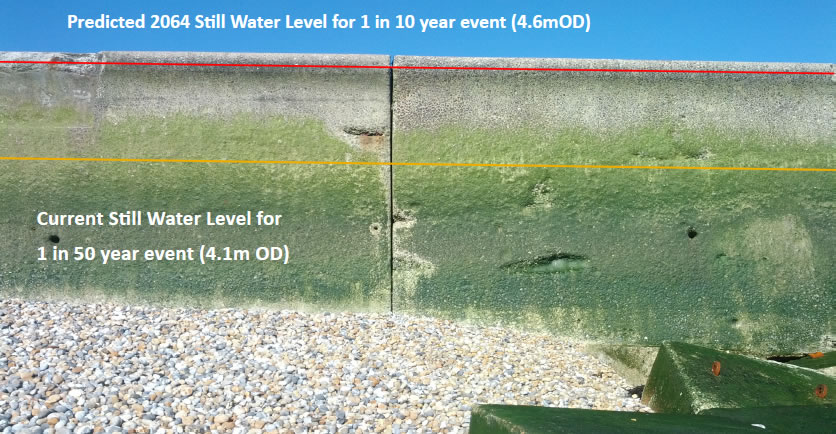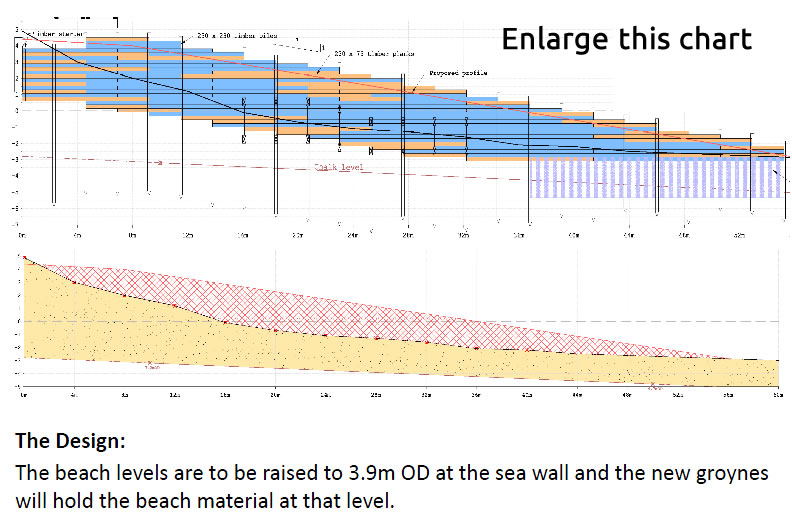Design of the Project and the future

It is widely accepted that sea levels are set to rise from the melting of the polar ice caps, thermal expansion of the ocean and, in Britain, isostatic rebound. This has a considerable impact on the level of protection provided by existing defences. Under the government’s policy, the design of new sea defences must take into account the expected rise in sea level so that they are effective now and in 100 years time. The new defences in Kingsdown are no exception; the text below explains how we’ve considered future sea level rise in our design.
How bad a storm is depends on the height of the sea, known as the still water level, and how big the waves are. Because tidal conditions are different all round the coast we don’t describe storms by their height but by how often that water level occurs. So on average there will be a 10‐year storm every ten years, a 50‐year storm every fifty years and so on. The words “on average” are important. If you flip a coin often enough you will, on average, get the same number of heads and tails but just because it came up heads last time does not mean that the next time will be tails. Similarly if there’s a 100‐year storm this year it doesn’t mean that the next one won’t turn up until 2025. For instance the worst storm along the east coast in living memory was that in 1953, which was about a 1 in 150 year storm.
“Global warming will mean that the frequency and intensity of storms will increase.”
Intergovernmental Panel on Climate Change, 2013
The level of protection we can afford changes along the coastline as a result of what is being protected and is therefore very much dependent upon economic considerations. If there were only open fields behind the seawall with no risk to life or property then the standard of protection would be against a 1 in 50 year storm or possibly even less. At Kingsdown we have designed the project such that no significant amount of water should come over the seawall for up to a 1 in 200 year storm and that the seawall itself should be able to withstand, without breaching, up to a 1 in 1000 year storm. The seawalls themselves are adequate but in places the protecting beach is becoming seriously eroded.
Future rises in sea level are dependent on the amount of global carbon emissions. We do not know how human activities will change in the future, so three predictions are given, based on high, medium and low emissions. The graph below shows Defra’s accepted predictions for sea level rise. Uncertainty increases with time, which is why the difference between the three predictions increase further into the future.

The image below shows the extreme still water levels and how they will change with sea level rise. Currently a 1 in 10 year storm has a still water level of 4.1m OD—in 50 years time a 1 in 10 year storm will have a still water level of just under 4.6 m OD. That is equivalent to a 1 in 200 year storm today. This means that, in fifty years time, we can expect, on average, storms with greater intensity more frequently. We use these water levels to ensure that the new beach will protect Kingsdown for the next 60 years.
Greater water levels mean that larger (and more destructive) waves can reach the beach. Big waves can scour away the beach material and expose the sea wall to undermining, overtopping and wave impact.
A large and stable beach can provide protection on to the sea wall by dissipating the wave’s energy. The beach needs to be maintained at a specific level to provide adequate protection against storm events. Overtopping calculations have been used to determine what beach level can protect against overtopping to an acceptable level.

DEFRA’s advice is that at present we should allow for sea levels to rise at 6mm a year or 300mm (one foot) over 50 years. This is allowed for in the design and if sea levels continue to rise at that rate then it will be 50 years or more before we have to do any further major work. However there is growing concern that this rate of sea level rise might increase and also that winters will become increasingly stormy, so that in 50 years time what is a 1 in 100 year storm today could become a 10 year storm and happen on average once in ten years. Sea levels could then be so high that the protection of bigger beaches will not be enough and the most practical options would either be to increase the height of the sea wall or accept a lower standard of protection. In 20 to 30 years time, when we should have much more accurate information about real sea level rise, we will have to give this serious consideration.
The before and after photographs show where Oldstairs Bay was completely stripped last winter as a result of the Christmas Eve 1 in 30 year storm. Post‐storm surveying revealed that approximately 21,000 m³ of shingle was lost.

Full Menu
Contact
Liam Wooltorton, Canterbury City Council: Tel: 01227 862454, email liam.wooltorton@canterbury.gov.uk
or
Keith Watson, Dover District Council: Tel: 01304 872399, email keith.watson@dover.gov.uk